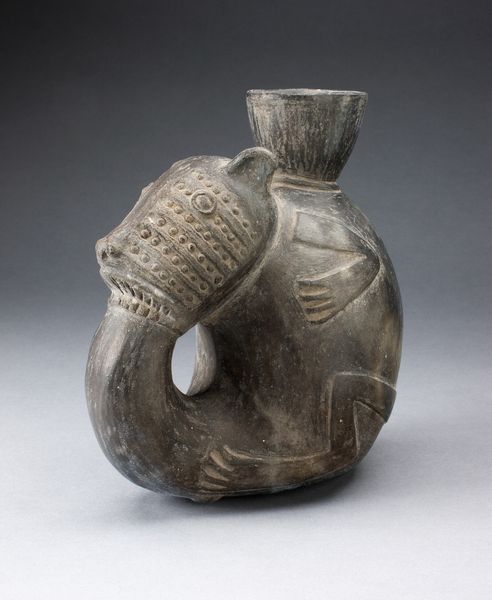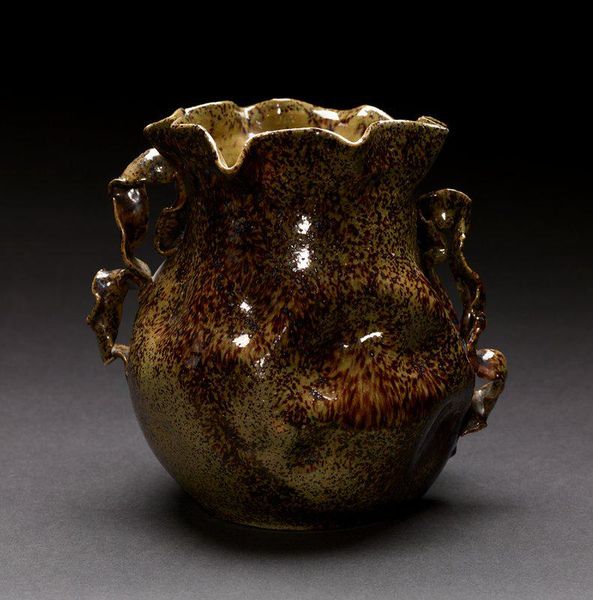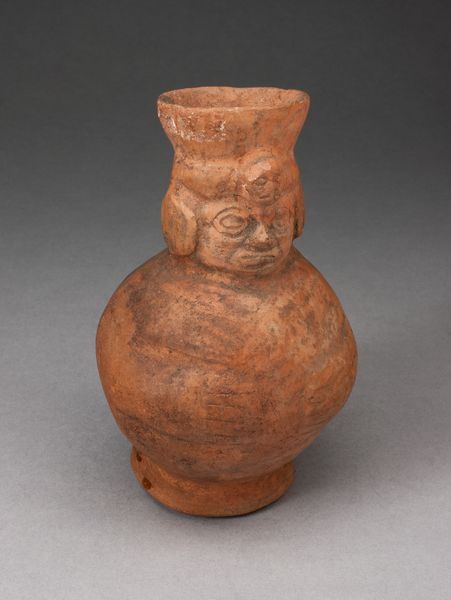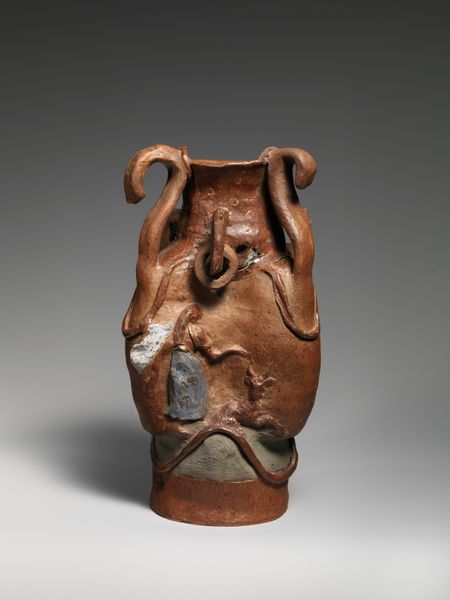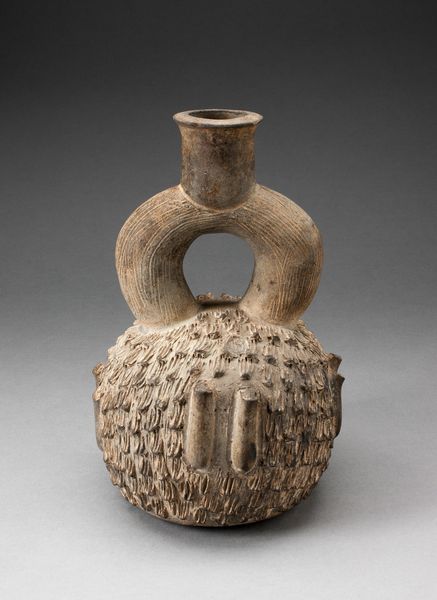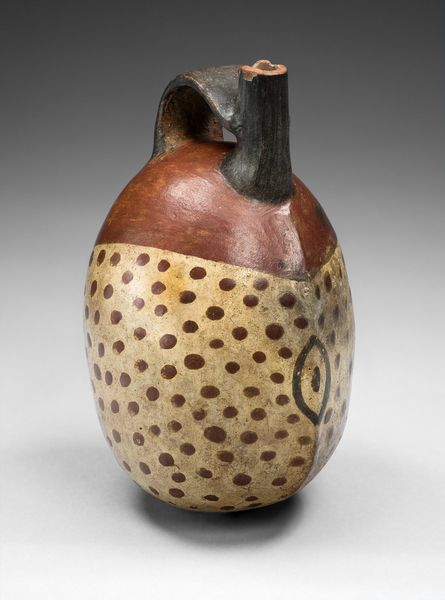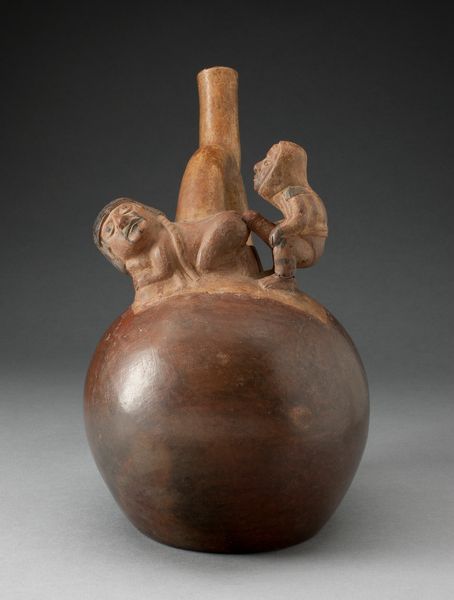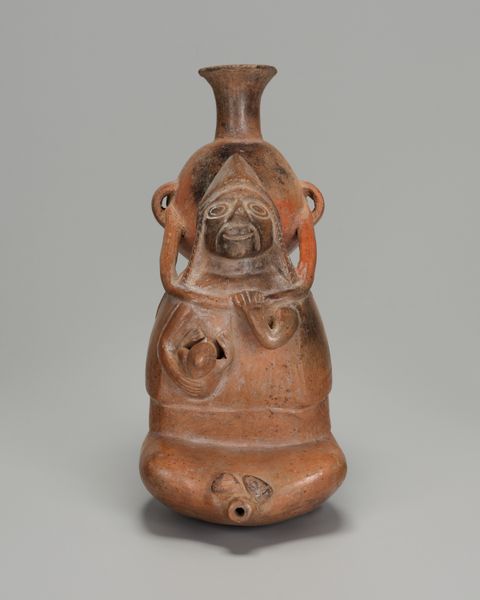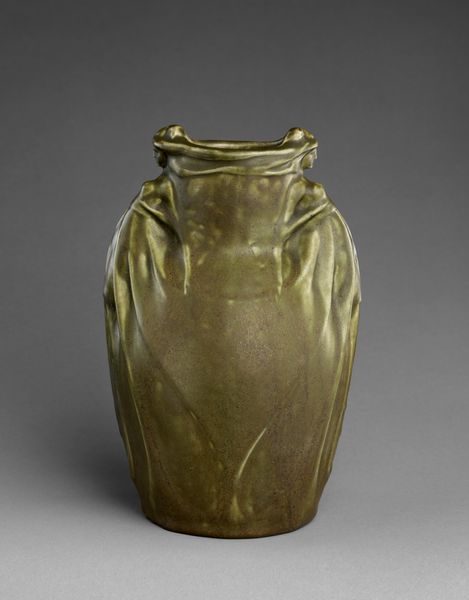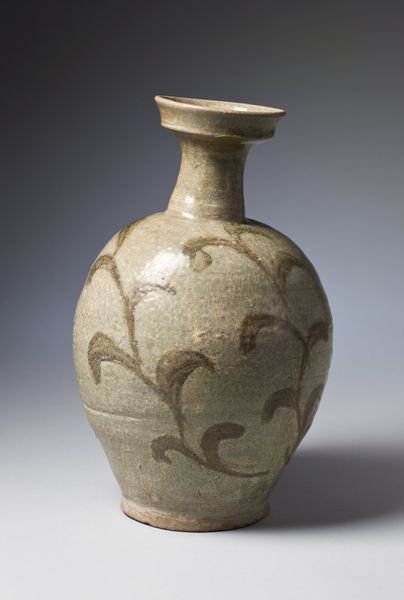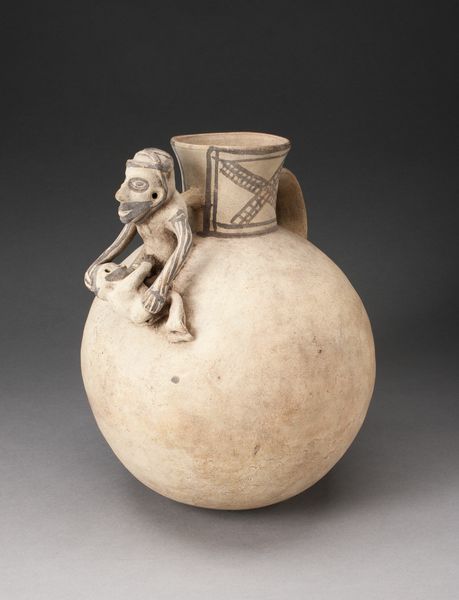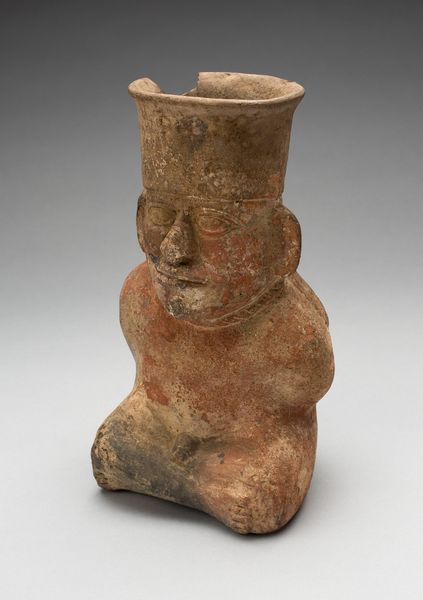
ceramic, porcelain
#
art-nouveau
#
ceramic
#
vase
#
porcelain
#
decorative-art
Dimensions: H. 22.2 cm (8 3/4 in.)
Copyright: Public Domain
Curator: At first glance, this piece makes me think of nature and armor. Editor: That's quite insightful! What you're responding to, I believe, is "Vase," a ceramic piece made around 1900 by Ernst Wahliss. It lives here at the Art Institute of Chicago. Wahliss was quite prolific, and you can see the influence of Art Nouveau, particularly in the organic motifs. Curator: The stylized leaves near the base anchor it to a particular sensibility, but what really grabs me is the way the porcelain body is formed. The layering is reminiscent of scales or perhaps stylized artichoke leaves arranged artfully up its side. It also resembles the layers of feathers on a bird. The repeating circular patterns feel distinctly totemic. Editor: It’s an interesting dance between the natural and the industrial, isn't it? Art Nouveau was often about bringing a sense of craft and organic beauty to everyday objects in an increasingly mechanized world. These decorative vases weren’t just vessels, but statements of refined taste, often showcased in bourgeois homes to signal a connection to artistic values. Curator: Right. It’s function serving form, literally! This layering has an appealing tactile quality and the small eye-like ornaments punctuating each scallop adds such psychological interest. Does it feel protective or watchful? Does it signal the cycle of life, the layered narratives of memory, each overlapping but still visible? Editor: Well, Art Nouveau aesthetics were tied to social ambitions, particularly aspirations toward respectability, cosmopolitanism and the pleasures of modern living. These kinds of objects also fueled the commercialization of art as a consumer product accessible to a growing middle class. Curator: And even with that tension present—the desire for distinction via mass production—a sense of unique artistry still emerges. The object maintains this quality because it merges nature, ornament, and the human capacity for wonder so seamlessly. Editor: Precisely, a reminder that art history is not separate from social history. Looking closer allows us to see what anxieties, and what dreams, this object might reflect about its time. Curator: And even how those continue to resonate today. Thank you! Editor: Thank you as well, these reflections help illuminate our connections to the past.
Comments
No comments
Be the first to comment and join the conversation on the ultimate creative platform.
